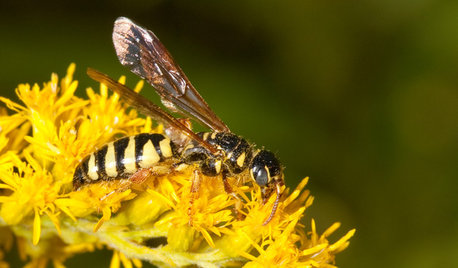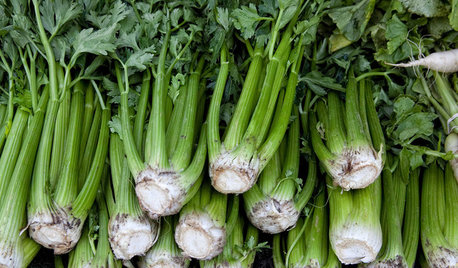nematodes
oldokie
9 years ago
Related Stories

LIFEHow to Outsmart Backyard Critters
Learn to think like a raccoon, skunk or squirrel to keep your home safe and your garden intact
Full Story
GARDENING AND LANDSCAPINGBid Bad Garden Bugs Goodbye and Usher In the Good
Give ants their marching orders and send mosquitoes moseying, while creating a garden that draws pollinators and helpful eaters
Full Story
GARDENING GUIDESHow to Switch to an Organic Landscape Plan
Ditch the chemicals for a naturally beautiful lawn and garden, using living fertilizers and other nontoxic treatments
Full Story
GARDENING GUIDESInvite Mining Bees to Your Garden by Planting Their Favorite Plants
Look for mining bees (Andrena) pollinating woodland wildflowers in U.S. gardens this spring
Full Story
FARM YOUR YARDHow to Get Good Soil for Your Edible Garden
The nutrients in your soil feed the plants that feed you. Here are tips on getting it right — just in time for planting season
Full Story
GARDENING GUIDESAttract Thynnid Wasps With Summer-Flowering Native Plants
These beneficial insects will hunt damaging beetle grubs in your lawn
Full Story
GARDENING GUIDESGet on a Composting Kick (Hello, Free Fertilizer!)
Quit shelling out for pricey substitutes that aren’t even as good. Here’s how to give your soil the best while lightening your trash load
Full Story
GARDENING GUIDESGarden Myths to Debunk as You Dig This Fall and Rest Over Winter
Termites hate wood mulch, don’t amend soil for trees, avoid gravel in planters — and more nuggets of garden wisdom
Full Story
EDIBLE GARDENSSummer Crops: How to Grow Tomatoes
Plant tomato seedlings in spring for one of the best tastes of summer, fresh from your backyard
Full Story
COOL-SEASON CROPSHow to Grow Celery
If you're up for a challenge this fall, try growing celery and celeriac in your garden.
Full Story0






shuffles_gw
slowpoke_gardener
Related Professionals
Southfield Landscape Architects & Landscape Designers · Suffern Landscape Architects & Landscape Designers · Bainbridge Island Landscape Contractors · Bridgeport Landscape Contractors · Deer Park Landscape Contractors · East Chicago Landscape Contractors · Goodlettsville Landscape Contractors · Kahului Landscape Contractors · Shaker Heights Landscape Contractors · East Norriton Landscape Contractors · North Aurora Landscape Contractors · Bensenville Landscape Contractors · Franconia Decks, Patios & Outdoor Enclosures · St. Louis Decks, Patios & Outdoor Enclosures · Wheaton Decks, Patios & Outdoor EnclosuresAuther
Okiedawn OK Zone 7
Auther
oldokieOriginal Author
chickencoupe